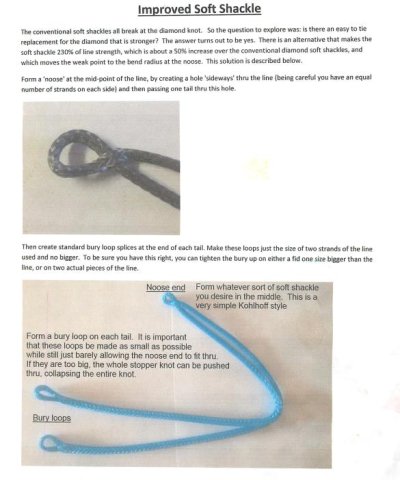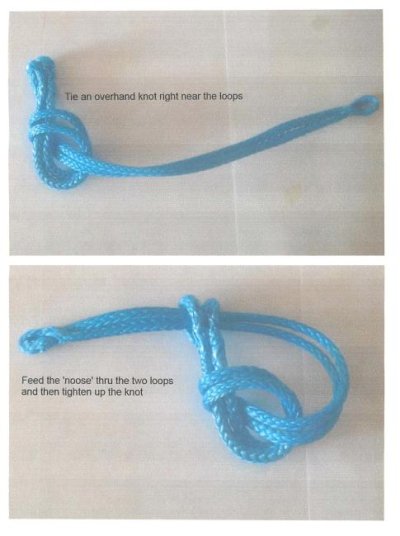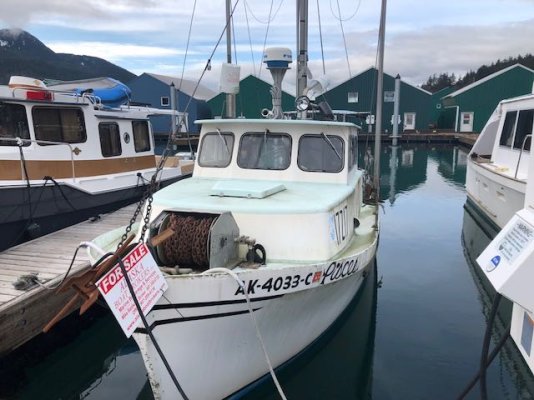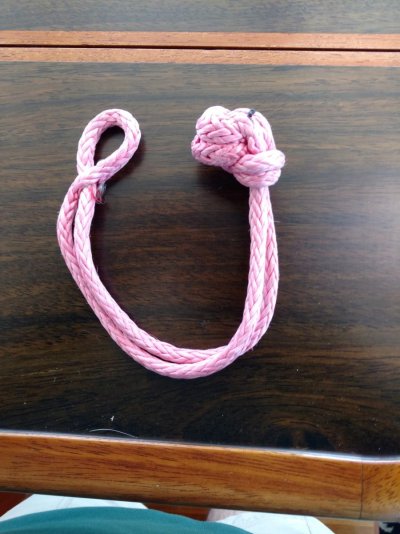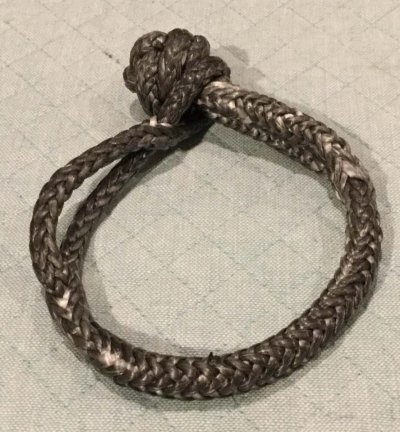Not sure what you use T, but for my 1/2" it is 7/16" which has a minimum strength of 21,000#, or a lot more than the 1/2" G4 chain does. Why anyone would use a metal plate, hook or whatever of any design to attach a snub line to chain instead of a soft shackle is beyond me.
In theory, a soft shackle as I make them should have about 4x the strength of the line it is made of. This is because the strain is born by 4 lengths of the line. In practice however, the stopper knot is the weak point. In all testing that I’ve seen, the actual breaking strength of the shackle is a bit more than the breaking strength of the line. Most agree that the strength of the shackle is about 125% of the strength of the line. So in my own mind, I just consider the breaking strength of the shackle to be equal to the breaking strength of the line it is made of. That gives me a 25% safety margin.
There is another knot that can be used for the stopper that will increase the breaking strength significantly, over 200% of line strength, but the button knot that is used is frankly more difficult to tie and it is just easier for me to keep using the diamond knot that is easy to tie, and I am experienced with. If I want something stronger, I just go with a large line. I know I can make a very good diamond knot consistently. That is better than a better knot that I’m not confident with.
The 3/16 (5mm) line that I use has a minimum spliced breaking strength of 6,500 lbs. So the shackles have a breaking strength of around 8,000 lbs but again, I just figure 6,500.
I am getting some 8mm dyneema that will have a breaking strength of 15,300 lbs. That would give a shackle strength of about 19,000 lbs.
1/2” 3 strand has a minimum breaking strength of about 5,700 lbs, so my shackle is much stronger than the line to which it is attached. However, the shackle isn’t as strong as 5/8” line. That is why I am going to make some with 8mm line. It will be stronger than the breaking strength of 3/4” line and almost as much as 1” line.
Bob, if you are interested, I can make you up a couple for you to try on Mahalo.

